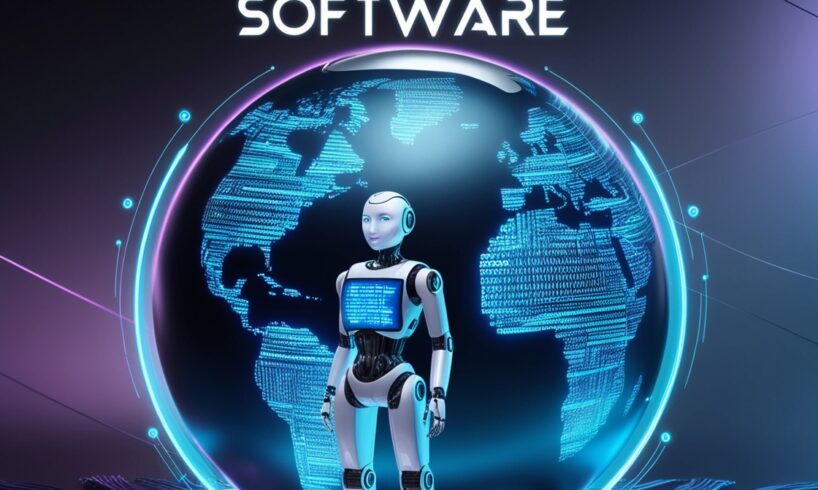
The global robot software market is experiencing unprecedented growth, driven by rapid advancements in automation, artificial intelligence (AI), and machine learning. As industries worldwide seek to enhance efficiency, precision, and productivity, the adoption of sophisticated robot software solutions has become paramount. .
Market Overview
In 2024, the global robot software market was valued at approximately USD 20.1 billion. Looking ahead, it is expected to reach USD 78.0 billion by 2033, exhibiting a compound annual growth rate (CAGR) of 15.43% during the forecast period from 2025 to 2033.
This significant growth underscores the escalating demand for automation and intelligent solutions across diverse industries.
Key Drivers of Growth
- Industrial Automation Surge: The rise of Industry 4.0 has led to increased integration of robotics in manufacturing processes. Robots equipped with advanced software are now essential for tasks such as assembly, welding, and quality inspection, enhancing production efficiency and reducing human error.
- Advancements in AI and Machine Learning: The incorporation of AI and machine learning algorithms into robot software has enabled machines to perform complex tasks, learn from data, and adapt to changing environments. This has broadened the scope of robotic applications in fields like healthcare, logistics, and customer service.
- Labor Shortages and Rising Costs: In regions facing labor shortages and increasing labor costs, businesses are turning to robotic solutions to maintain productivity. Robots can operate continuously without fatigue, leading to cost savings and consistent output quality.
- Enhanced Safety and Precision: Robots can perform hazardous tasks in environments that may be unsafe for humans, thereby reducing workplace injuries. Additionally, their precision in operations such as surgery or intricate assembly processes surpasses human capabilities.
Segmentation Insights
- By Software Type:
- Recognition Software: Utilized in applications requiring object or pattern identification, such as facial recognition or quality control in manufacturing.
- Simulation Software: Allows for the virtual testing of robotic operations, reducing deployment risks and costs.
- Predictive Maintenance Software: Monitors robot performance to predict and prevent potential failures, thereby minimizing downtime.
- Data Management and Analysis Software: Enables the collection and analysis of data from robotic operations to inform decision-making and optimize processes.
- Communication Management Software: Facilitates seamless interaction between robots and other systems or devices, ensuring coordinated operations.
- By Robot Type:
- Industrial Robots: Predominantly used in manufacturing for tasks like welding, painting, and assembly.
- Service Robots: Employed in sectors such as healthcare, retail, and logistics for functions including delivery, customer interaction, and assistance.
Regional Analysis
Asia-Pacific is anticipated to be the fastest-growing market, driven by strong manufacturing bases in countries like China, Japan, and South Korea. The region’s focus on automation and technological innovation contributes significantly to this growth.
North America and Europe also represent substantial markets, with widespread adoption of advanced technologies and a strong emphasis on research and development in robotics.
Challenges
Despite the promising outlook, the robot software market faces several challenges:
- High Implementation Costs: The initial investment for deploying advanced robotic systems can be prohibitive, especially for small and medium-sized enterprises (SMEs).
- Cybersecurity Risks: As robots become more connected, they are susceptible to cyberattacks, necessitating robust security measures to protect data and ensure operational integrity.
- Skill Gaps: The development, operation, and maintenance of sophisticated robot software require specialized skills, leading to a demand for trained professionals in the field.
Future Outlook
The future of the robot software market is poised for remarkable advancements. Emerging trends include the integration of cloud computing and edge computing, which will enable real-time data processing and remote monitoring of robots. Additionally, the development of collaborative robots (cobots) designed to work alongside humans will open new avenues in various industries.
Furthermore, as AI and machine learning technologies continue to evolve, robots will become more autonomous, capable of learning from their environments, and making informed decisions without human intervention. This will lead to increased efficiency and the ability to perform more complex tasks across different sectors.
The robot software market is experiencing substantial growth, fueled by technological advancements and the rising demand for automation across industries. Despite challenges like high implementation costs and cybersecurity risks, continuous innovation and the expanding use of robotics are shaping a dynamic and evolving market from 2025 to 2032.
The robot software market is experiencing substantial growth, fueled by technological advancements and the rising demand for automation across industries. Despite challenges like high implementation costs and cybersecurity risks, continuous innovation and the expanding use of robotics are shaping a dynamic and evolving market from 2025 to 2032The robot software market is experiencing substantial growth, fueled by technological advancements and the rising demand for automation across industries. Despite challenges like high implementation costs and cybersecurity risks, continuous innovation and the expanding use of robotics are shaping a dynamic and evolving market from 2025 to 2032.
The robot software market is experiencing substantial growth, fueled by technological advancements and the rising demand for automation across industries. Despite challenges like high implementation costs and cybersecurity risks, continuous innovation and the expanding use of robotics are shaping a dynamic and evolving market from 2025 to 2032.
The robot software market is experiencing substantial growth, fueled by technological advancements and the rising demand for automation across industries. Despite challenges like high implementation costs and cyber security risks, continuous innovation and the expanding use of robotics are shaping a dynamic and evolving market from 2025 to 2032.

I am a person who is positive about every aspect of life.I have always been an achiever be it academics or professional life. I believe in success through hard work & dedication.
Technology Blogger at TechnoSecrets.com






